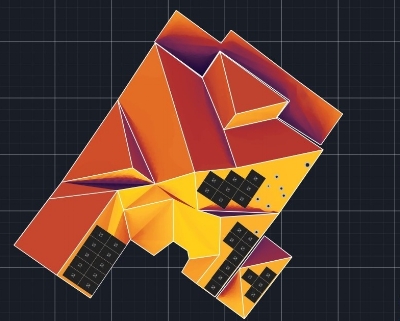
Although almost every roof type can physically support the installation of solar panels, not every roof is large enough, exposed to enough sunlight, or facing the right direction to make it economically practical.
During the early stages of your solar project, these details are looked at and used to determine the way in which your solar panel system should be oriented and the direction that they should face.
The direction that your solar panels face is fundamental to how much energy they can produce and how much money you can save over time. You might be thinking that the direction your panels should face is obvious and should simply be towards the direction where they will be exposed to sunlight for the most amount of the day, but the answer is not that simple.
In this post, we will explore this question further so you can go into your solar project with as much knowledge as possible.

Net Energy Metering and Time of Use
The direction that your solar panels face is ultimately dependent on whether or not your system is connected through net energy metering (NEM) and under a time of use (TOU) payment structure. Since the majority of solar panel owners keep their system on the grid, we can split this grouping into simply those who pay for energy based on a TOU payment structure and those who do not.
First off, NEM is a system where the solar panel owner is awarded energy credits for any excess electricity that their system produces. These credits can be used to purchase energy in the future to help you save significantly on your electric bill.
The TOU payment structure is fairly common across the country, and especially prevalent in California with its new NEM 2.0 model. TOU has consumers pay more per kWh of electricity use at peak hours than at off hours. Peak hours may differ for each utility company, but they always correlate to when the majority of consumers are using the most electricity, or when costs to the utility are the most to produce electricity. This is usually in the early afternoon to evening when most people are returning home from work.
So, why is all of this important for the direction that your solar panels face?
Face Panels West for TOU Ratepayers
For solar panel owners that are under a TOU payment system, the best way to save money on your electric bill is to produce more energy during peak hours than during off hours. This means that your solar panels will be put in a unique direction specifically to maximize energy production between this time range. To do this, you should point your solar panel west.
When you point your solar panels west, you are not maximizing the total amount of energy that is produced. What you are doing is optimizing your energy production for maximum savings with your utility company.
Face Panels South for Non-TOU Ratepayers
For those who are not part of a TOU model with their utility company, the direction that you want to face your solar panels is south. This is so that you can expose your solar panels to as much light as possible to optimize their energy production.
Without a TOU structure, consumers do not need to focus on maximizing their energy production at a set time of the day. Therefore, their goal is to produce as much energy as they can throughout the day.
Be Sure to Speak with a Solar Expert
Every home is unique, and it’s best to speak with an expert in solar to understand where solar panels should be placed on your roof.
Outside of TOU, the biggest factors that influence the direction of your solar panels are shading and other obstructions that impact the panel’s exposure to light. The environment that your solar panel system is installed in will be the biggest factor behind whether or not you are on TOU.
Get Started Today!
Now that you know what direction your solar panels should face, you can really start to imagine what a solar panel system can look like on your home.
These details, among several others, are crucial to the installation of your system. Get started today and go over everything with one of our experienced energy advisors!



